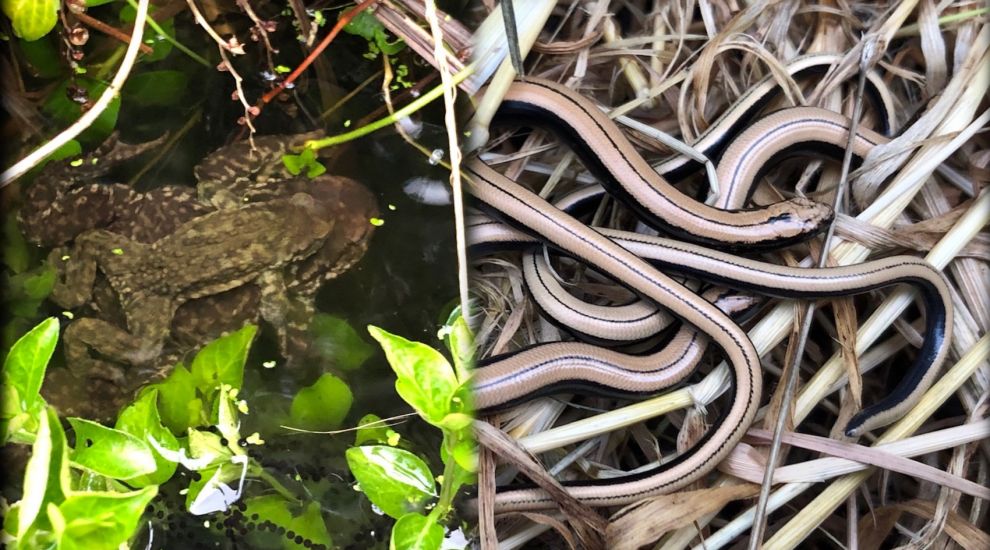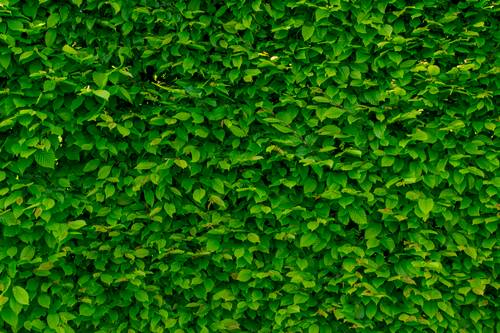


A local conservationist has shared the lessons he has learned from spending time in his garden, and how he has been helping its ever-expanding wild inhabitants thrive.
Piers Sangan gives his top tips on how islanders can help wildlife thrive in their gardens this autumn in his latest column for Express...
"Like many during lockdown this year I have ended up spending more time in the garden, but this year I was gardening with a difference, focusing on improving the limited garden space for wildlife.
My efforts have been well rewarded with a plethora of insects including glow-worms, great green bush crickets, a variety of bees and several protected species including slow worms breeding in the garden for the first time. All of this has been achieved in a garden space no more than 6x8 meters on a built-up avenue with few neighbouring gardens.
Autumn and winter are the perfect time for undertaking some garden renovation work and planning for next year; as such I thought I would share some top tips for creating a wildlife garden.
A Wildlife garden does not mean that you can not benefit from the space at the same time. Fruit trees and bushes can achieve both providing a great source of food for invertebrates which in turn help to increase the yield of your fruit.
At the end of the season any left-over fruit can be left out as food for your garden’s wildlife. If planting ornamental plants, trees which produce red berries are fantastic at attracting birds during the winter (Sorbus and Hawthorn). Night flowering plants such as Jasmine also benefit the invertebrates after dark such as moths.

Pictured: "Fruit trees and bushes can achieve both providing a great source of food for invertebrates which in turn help to increase the yield of your fruit."
A pond is possibly one of the most beneficial features that can be installed for wildlife and they do not need to be big. My own pond is 1.5 x1m and 60cm deep yet most years during the breeding season I will have 50+ toads vying for a mate. During the summer damselflies dance over the pond laying their eggs just below the surface. At night the small body of water attracts a host of flying insects and along with them, bats. To date over my own garden, I have recorded 6 of our islands 18 bat species.

Pictured: My own pond is 1.5 x1m and 60cm deep yet most years during the breeding season I will have 50+ toads vying for a mate.
This has been the biggest change to the garden this year where I gave ¼ of the available lawn space over to natural growth by not cutting the area until late August. Also leaving margin strips a couple of inches wide around the edge of the lawn to allow wildlife to freely move around with suitable cover to protect them.
The long grass this year was accompanied by a host of flora from the yellow hawkbit to wild carrot, self-heal, vetchling, clovers and many more. All summer this patch of grass was alive with invertebrate life and it was amazing to watch the change over in both floral species and the invertebrates using the area.

Pictured: Leaving areas of the lawn long can encourage more wildlife to flourish.
The last is probably the most obvious create some homes for the wildlife in the garden this can be anything from a shop-bought bird box to a pile of rocks or logs in the corner of the garden. When I first started work on our garden you would not find any toads or newts in the area outside of the breeding season.

Pictured: Gardening for wildlife is not about abandoning an area to go ‘wild’ but to help craft a variety of habitats to help support as much wildlife as possible.
Since creating various areas of habitat they are now present throughout the year which helps keep down the slug and snail populations.
Gardening for wildlife is not about abandoning an area to go ‘wild’ but to help craft a variety of habitats to help support as much wildlife as possible.